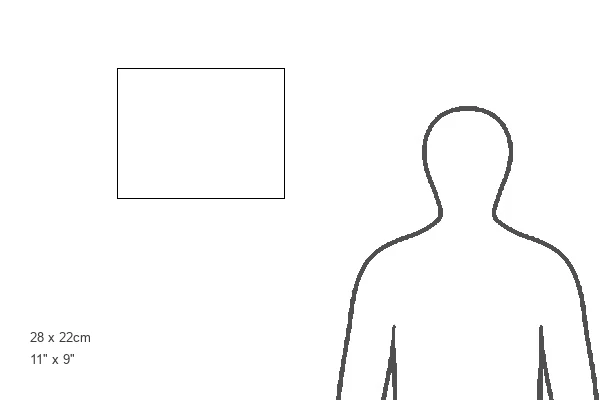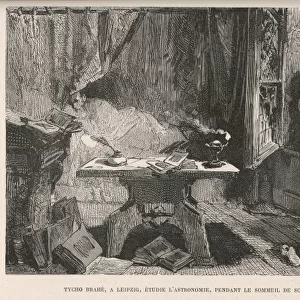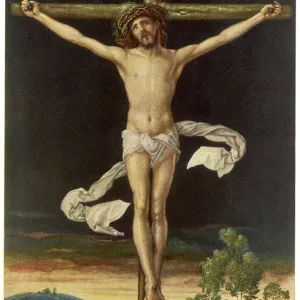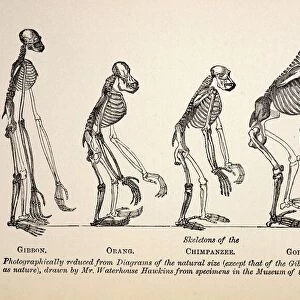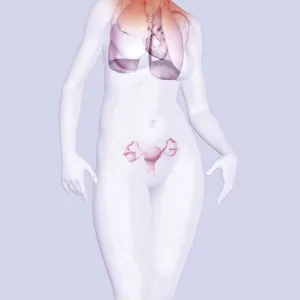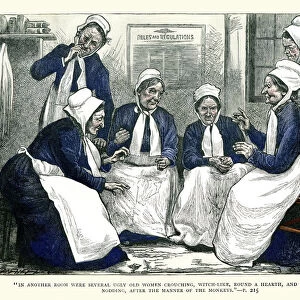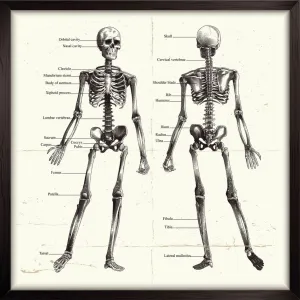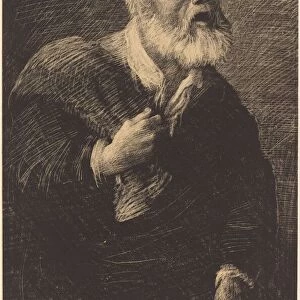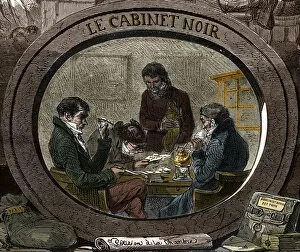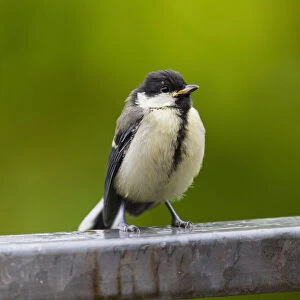Photographic Print : Primate evolution
![]()

Photo Prints from Science Photo Library
Primate evolution
Primate evolution. Historical artwork of various primate skeletons, showing their evolutionary similarities and differences. The skeletons are (left to right): a gibbon (family Hylobatidae), an orangutan (Pongo pygmaeus), a chimpanzee (Pan troglodytes), a gorilla (Gorilla gorilla) and a human (Homo sapiens). All primates display certain physical characteristics such as opposable thumbs, big toes and forward-directed eyes with binocular vision. Man has a larger skull capacity than other primates as well as shorter arms and smaller feet and hands. The other primates (except the gibbon) are essentially four-footed. The gorilla is by far the most physically powerful primate, with a bigger frame and larger pelvis. Artwork from The Outline of Science (J. Arthur Thomson, 1922)
Science Photo Library features Science and Medical images including photos and illustrations
Media ID 6419748
© SHEILA TERRY/SCIENCE PHOTO LIBRARY
1900s 1922 Bones Chimpanzee Evolution Evolutionary Gibbon Gorilla History Of Science Homo Sapiens Orang Utan Orang Utang Pan Troglodytes Pongo Pygmaeus Pre Historic Pre History Primate Primates Skeletons Theory Of Evolution Walking Gorilla Gorilla Hylobatidae Mono Chrome
11"x8.5" Photo Print
Step back in time and explore the fascinating journey of primate evolution with our Media Storehouse range of Photographic Prints. This captivating image from Science Photo Library showcases a historical artwork that brilliantly illustrates the skeletons of various primates, revealing their evolutionary similarities and differences. Bring this intriguing piece of scientific history into your home or office and ignite conversations about the wonders of natural selection and the development of our primate ancestors. Order your Media Storehouse Photographic Print of Primate Evolution today!
Photo prints are produced on Kodak professional photo paper resulting in timeless and breath-taking prints which are also ideal for framing. The colors produced are rich and vivid, with accurate blacks and pristine whites, resulting in prints that are truly timeless and magnificent. Whether you're looking to display your prints in your home, office, or gallery, our range of photographic prints are sure to impress. Dimensions refers to the size of the paper in inches.
Our Photo Prints are in a large range of sizes and are printed on Archival Quality Paper for excellent colour reproduction and longevity. They are ideal for framing (our Framed Prints use these) at a reasonable cost. Alternatives include cheaper Poster Prints and higher quality Fine Art Paper, the choice of which is largely dependant on your budget.
Estimated Image Size (if not cropped) is 27.9cm x 13cm (11" x 5.1")
Estimated Product Size is 27.9cm x 21.6cm (11" x 8.5")
These are individually made so all sizes are approximate
Artwork printed orientated as per the preview above, with landscape (horizontal) orientation to match the source image.
EDITORS COMMENTS
This print showcases the fascinating journey of primate evolution. The historical artwork beautifully captures the similarities and differences between various primate skeletons, offering a glimpse into our shared ancestry. From left to right, we observe the graceful gibbon, followed by the majestic orangutan, intelligent chimpanzee, powerful gorilla, and finally, the pinnacle of evolution - Homo sapiens. Each primate exhibits distinct physical characteristics such as opposable thumbs, big toes for grasping branches or walking upright, and forward-directed eyes with binocular vision. However, it is evident that humans possess a larger skull capacity compared to other primates. Our species also stands out with shorter arms and smaller feet and hands. The artwork from "The Outline of Science" published in 1922 provides us with valuable insights into our biological history. It reminds us that all life on Earth is interconnected through an intricate web of evolutionary processes spanning millions of years. As we gaze upon this monochromatic masterpiece filled with bone structures meticulously depicted by skilled artists from over a century ago, we are reminded of our place in nature's grand tapestry. This image serves as a testament to both scientific curiosity and artistic expression while highlighting humanity's ongoing quest to understand our origins through the theory of evolution.
MADE IN THE USA
Safe Shipping with 30 Day Money Back Guarantee
FREE PERSONALISATION*
We are proud to offer a range of customisation features including Personalised Captions, Color Filters and Picture Zoom Tools
SECURE PAYMENTS
We happily accept a wide range of payment options so you can pay for the things you need in the way that is most convenient for you
* Options may vary by product and licensing agreement. Zoomed Pictures can be adjusted in the Cart.


